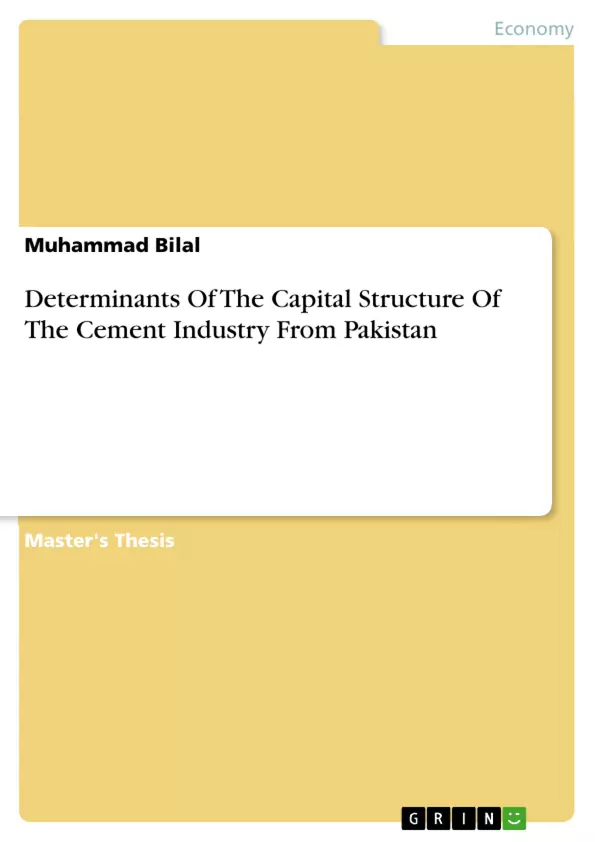This research/study has been conducted on the capital structure of the cement industry Pakistan taking the sample of 11 companies out of the population of 24 companies registered on the Karachi stock exchange of the period 2001 to 2015. This study used the least square method to find out the relationship of dependent and independent variables.
It has taken leverage as a dependent variable and firm size, growth, liquidity, tangibility, non debt tax shield, and profitability as a independent variables, while the 3 independent variables have not supported the assumption (riddance test) of linear regression model, which is profitability liquidity and growth, thus its carry out the research on the remaining 4 variables which is dependent variable leverage and independent variables non debt tax shield, tangibility and firm size.
The outcome of the research is demonstrated after analyzing that there is negative relationship in between the firm size and Non debt tax shield with leverage, while there is positive relationship in between the tangibility and leverage. So after analyzing it has been determined the main determinates of capital structure of the cement industry is tangibility of asset.
Inhaltsverzeichnis (Table of Contents)
- ABSTRACT
- DEDICATION
- ACKNOWLEDGMENT
- CHAPTER I
- INTRODUCTION
- Background
- Capital Structure
- Problem Statement
- Research Objective
- Research Question
- Significance of the study
- Definition of Key Term:
- CHAPTER II
- LITERATURE REVIEW
- CHAPTER III
- Data and Methodology
- Regression Model
- Definition of Variable
- Dependent and Independent Variables
- Hypothesis Development
- Assumption of Regression
- CHAPTER IV
- RESULT AND ANALYSIS
- Plot and Histogram Graph
- Descriptive Statistics
- Riddance Variable Test
- Proof of Assumption for Regression
- Linear Regression Model
- Hypothesis Testing
- CHAPTER V
- CONCLUSION AND RECOMDENATION
- Conclusion
- Recommendation
- References
Zielsetzung und Themenschwerpunkte (Objectives and Key Themes)
This research study investigates the capital structure of the cement industry in Pakistan by analyzing the relationship between leverage and various financial factors. The study aims to determine the key determinants of capital structure within this industry, providing valuable insights for both industry participants and investors.
- Capital structure of the cement industry in Pakistan
- Relationship between leverage and financial factors
- Determinants of capital structure
- Financial performance and leverage
- Implications for investors and industry participants
Zusammenfassung der Kapitel (Chapter Summaries)
The first chapter provides an introduction to the research, outlining the background, problem statement, research objectives, and significance of the study. It also defines key terms used throughout the research. Chapter II delves into a comprehensive review of existing literature related to capital structure, focusing on previous studies and theories relevant to the cement industry in Pakistan. Chapter III discusses the methodology employed in the research, including the regression model used, definition of variables, hypothesis development, and assumptions of the regression model. Chapter IV presents the results and analysis of the research, including descriptive statistics, riddance variable test, and hypothesis testing.
Schlüsselwörter (Keywords)
Capital structure, cement industry, Pakistan, leverage, financial factors, firm size, growth, liquidity, tangibility, non-debt tax shield, profitability, regression analysis, linear model, hypothesis testing.
- Quote paper
- Muhammad Bilal (Author), 2015, Determinants Of The Capital Structure Of The Cement Industry From Pakistan, Munich, GRIN Verlag, https://www.grin.com/document/315631



